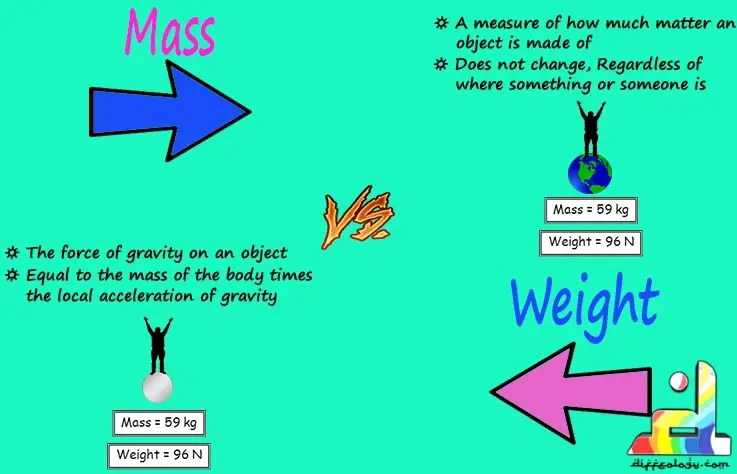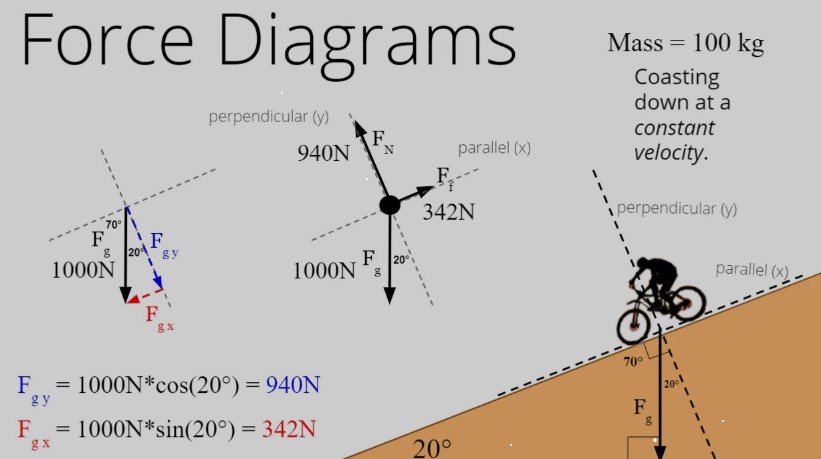Weight and mass are fundamental concepts that often come into play in our daily lives, scientific studies, and engineering projects. While commonly used interchangeably in colloquial language, these terms have distinct definitions and implications in the world of physics. The relationship between weight and mass is not only intriguing but essential for a deeper understanding of how objects interact within the framework of gravity.
The relation between weight and mass is defined by the gravitational force exerted on an object. Mass is a measure of the amount of matter in an object and is constant regardless of its location. Weight, on the other hand, is the force of gravity acting on the mass of an object, making it variable depending on the gravitational pull of the planet or celestial body where the object is located.
Understanding this relationship helps in distinguishing how objects will behave under different gravitational forces. It sheds light on why objects weigh less on the moon than on Earth, despite their mass remaining unchanged. This concept is not only pivotal in physics but also plays a critical role in various applications, ranging from daily life situations to complex scientific and engineering calculations.

Weight Defined
Explanation of Weight
Weight is a force that results from the gravity pulling down on any object with mass. It’s crucial to note that weight is not a static characteristic of an object but rather depends on the gravitational force exerted on it. Hence, an object’s weight can change based on its location in the universe due to variations in gravitational pull.
Factors Affecting Weight
Several factors influence an object’s weight, but the most significant is gravity. The gravitational force varies across different celestial bodies; for example, gravity on the moon is about 1/6th as strong as Earth’s gravity. This variation significantly affects the weight of an object. Other factors include the mass of the object and the distance from the center of the gravitational source.
Weight Measurement Units
The standard unit of measurement for weight is the Newton (N) in the International System of Units (SI). However, in everyday use, weight is often expressed in kilograms (kg) or pounds (lbs), which technically measure mass but are commonly used to refer to weight under Earth’s gravity.
Mass Explained
Definition of Mass
Mass is a measure of the amount of matter an object contains. Unlike weight, mass is an intrinsic property of an object and does not change regardless of its environment or location. It’s a fundamental characteristic that reflects the object’s resistance to acceleration when a force is applied.
Characteristics of Mass
Mass is invariant, meaning it remains constant across all contexts. It’s a scalar quantity, so it has magnitude but no direction. Mass also directly influences an object’s inertia—the resistance to changes in motion. The greater the mass, the greater the inertia.
Units for Measuring Mass
Mass is measured in kilograms (kg) in the International System of Units (SI). Other units include grams (g), milligrams (mg), and for larger masses, metric tons. In some contexts, mass is also discussed in pounds (lbs), although this unit is more commonly associated with weight in daily use.
Core Differences
Comparative Analysis of Weight and Mass
Weight and mass are fundamentally different. Mass is an intrinsic property of matter, while weight is an extrinsic force that results from gravitational attraction on mass. One of the easiest ways to differentiate them is to remember: mass measures matter, weight measures force.
How Gravity Affects Both
Gravity is the key differentiator. It affects weight directly but has no impact on mass. The gravitational pull on an object determines its weight, making weight variable. In contrast, mass remains constant regardless of gravity or location.
Interconnectedness
The Mathematical Relationship Between Weight and Mass
The connection between weight and mass is defined by the equation:
�=��W=mg
Where �W is weight, �m is mass, and �g is the acceleration due to gravity. This formula shows that weight is directly proportional to both the mass of the object and the gravitational force acting upon it.
Real-World Examples Illustrating Their Connection
- An astronaut’s mass remains the same whether they are on Earth, in orbit, or walking on the moon. However, their weight changes significantly due to the differences in gravitational force.
- Gym weights feel lighter in water due to the buoyant force acting against gravity, affecting the net force (weight) experienced by the object, not its mass.
Calculating Weight from Mass
Formula and Calculation Methods
To calculate weight from mass, you can follow these simple steps:
- Identify the mass of the object (in kilograms).
- Determine the gravitational force in the location of interest (in meters per second squared).
- Apply the formula: �=��W=mg.
This calculation will give you the weight of the object in Newtons (N).
Factors Influencing the Calculation
The accuracy of this calculation can be influenced by:
- Precise measurement of mass.
- Accurate value for gravitational acceleration, which can vary slightly over Earth’s surface.
- External factors like air resistance and buoyancy in fluids, which technically affect the net force experienced but are usually negligible in basic calculations.
Impact of Gravity
Gravity’s Role in the Weight-Mass Relationship
Gravity is the force that links mass and weight. Without gravity, objects would have mass but no weight. The strength of gravity’s pull on an object’s mass determines its weight, highlighting the importance of gravity in the weight-mass relationship.
Variations in Weight with Changing Gravity
The weight of objects varies significantly across different celestial bodies due to differences in gravity. For example:
- On the Moon, gravity is about 1/6th of Earth’s, so an object would weigh much less.
- On Jupiter, gravity is much stronger, dramatically increasing the weight of an object compared to its weight on Earth.

Applications and Implications
In Daily Life
The difference between weight and mass isn’t just a topic for physics classrooms; it has real-world applications and implications that affect our everyday decisions. Understanding these concepts can help us make more informed choices in various aspects of our lives.
- Practical examples of weight and mass differences: Consider the act of buying fruits in a supermarket. The mass of the fruits remains the same regardless of where you take them on Earth, but their weight could change if measured on a different planet due to the gravitational pull. This distinction is crucial in scientific contexts but is simplified in daily transactions where gravity is constant.
- How understanding affects everyday decisions: For athletes, especially those involved in weightlifting or sports requiring precise body mass management, understanding the difference between mass and weight is essential. Training regimes and nutrition plans are often designed with the aim of altering body mass rather than body weight, emphasizing the importance of lean muscle mass over simply losing or gaining weight.
In Science and Engineering
The concepts of mass and weight are foundational in science and engineering, impacting research, development, and practical applications in countless ways.
- Importance in scientific research: In the realm of physics, accurately distinguishing between mass and weight is crucial for experiments that involve gravitational forces. Researchers must account for these differences when designing experiments and interpreting results, especially in fields like astrophysics and materials science.
- Applications in engineering and technology: Engineers must consider mass and weight when designing buildings, vehicles, and other structures. For example, the mass of a vehicle affects its inertia and the amount of force needed to accelerate, while its weight influences the stress on structural components and the ground.
In Space Exploration
The exploration of space requires a nuanced understanding of the relationship between mass and weight due to the varying gravitational forces encountered.
- Adjustments for gravity in space missions: Astronauts experience weightlessness in space, not because their mass changes, but because the force of gravity is much less than on Earth. Equipment and life support systems must be designed to function under these conditions, where traditional concepts of weight do not apply.
- Calculating mass and weight on other planets: For missions to other planets, scientists must calculate the expected weight of rovers and equipment based on the destination’s gravitational pull. This calculation is critical for ensuring that landing crafts can withstand the impact of landing and that rovers are capable of moving on the planet’s surface.
Common Misunderstandings
Despite their clear scientific definitions, the terms mass and weight are often confused in everyday language, leading to common misunderstandings.
- Weight vs. Mass in colloquial use: In daily conversation, people frequently say “weight” when they refer to “mass”. For instance, when someone talks about losing weight, they generally mean reducing their body mass, as the gravitational pull remains constant.
- Clarifying common confusions: One way to clarify the difference is to remember that mass is a measure of how much matter an object contains and is measured in kilograms or grams, while weight is the force exerted by gravity on that mass and is measured in newtons. Educating the public and emphasizing these distinctions in educational settings can help reduce confusion.
Frequently Asked Questions
How is weight calculated from mass?
Weight is calculated from mass by applying the formula �=��W=mg, where �W is the weight, �m is the mass of the object, and �g is the acceleration due to gravity. This formula shows that weight depends on the mass of the object and the gravitational force exerted on it, which varies with location.
Does mass change with location?
No, mass does not change with location. Mass is a measure of the amount of matter in an object and remains constant regardless of where the object is, whether it’s on Earth, the moon, or anywhere else in the universe. This constancy contrasts with weight, which can change due to variations in gravitational pull.
Why do objects weigh less on the moon?
Objects weigh less on the moon because the moon’s gravitational force is weaker than Earth’s. Since weight is the result of gravity acting on mass, the weaker gravitational pull on the moon means that objects will have a lower weight there, even though their mass remains unchanged.
Conclusion
The relationship between weight and mass is a cornerstone of understanding the physical world. It elucidates the fundamental principles of how objects interact with the forces of gravity, providing a basis for countless scientific and engineering applications. Recognizing the distinction and connection between these two concepts allows for a deeper appreciation of both the simplicity and complexity of the natural world.
This understanding not only enriches our grasp of basic physics but also empowers us to make informed decisions in various practical scenarios. Whether it’s calculating the fuel requirements for a spacecraft or understanding why we can jump higher on the moon, the concepts of weight and mass are undeniably central to our interaction with the physical universe.
